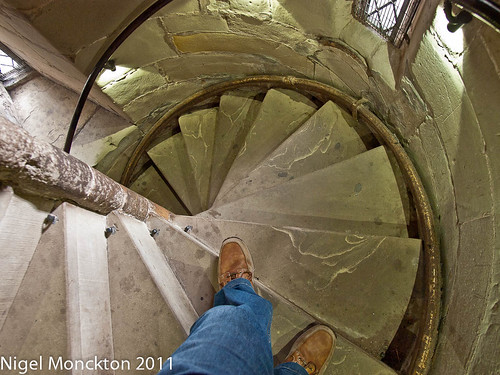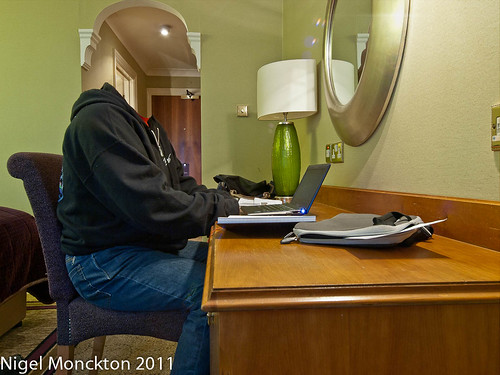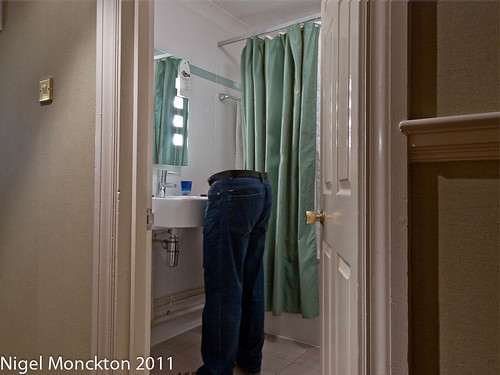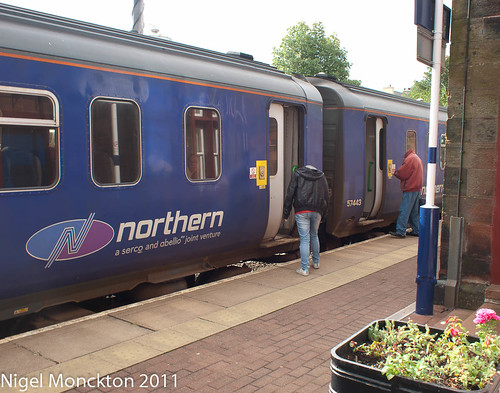The course notes observe that this “is not considered a genre in most photographic writing” and suggests that I will need to search in areas away from traditional architecture outlets to find examples. So I thought I’d give it a try, and to my surprise found that photos that reasonably fall into this category are in fairly short supply.
A flick through a couple of recent back issues of the BJP turned up nothing of note – ditto the Family of Man catalogue that I’ve recently acquired.
No problem I thought – I’ll try the Wanderlust Travel Photo of the Year Vol.4 – the cover photo of a Sikh meditating before the golden temple was promising, but in truth that was very nearly it. Very few other photos fitted with the idea of people interacting with space, a notable exception being: Coffee shop, Madurai, India | Wanderlust Photo of the Year 2007 - People section | Wanderlust which admirably caught the hustle and bustle of an Indian coffee bar.
Travel Photographer of the year – Journey Three offered a few more examples: shots by Karoki Lewis and Larry Louie being notable examples. Cat Vinton’s award winning series of a family dismantling and packing away a yurt is also worth seeing.
In truth however ‘interaction with place’ was in relatively short supply in books which I’d expected to feature it quite strongly. Perhaps travel photography is conventionally about ‘People’ or ‘Place’ rather than ‘People and Place’, but that does feel rather at odds with my perception of its aim.
Given the observation above about this kind of photography not being regarded as a genre the next place I went was a couple of ‘instruction’ books in my collection – Tom Ang’s Digital Photographers Handbook and Advanced Photography by John Hedgecoe. Both contain lots of pictures of ‘place’ and lots of pictures of ‘people’, but in the latter case they tend to be interacting with each other or an object – rather than there being any sense of interaction with their surroundings.
Oddly, Ang has sections on buildings and urban views and only one of the pictures features a person – surely the essence of urbanness is the population density. The documentary section has a rather nice shot of a charcoal maker (I assume) but the rest are shots of people looking at the camera (is this really documentary?). There are also one or two other examples dotted through the book, but given that it has 400 pages this book reflects the notion that people and place is not a recognised genre.
The Hedgecoe book does rather better – with sections called ‘People in Context’, ‘The Photo Interview’ and even the ‘On location’ section features people interacting with place. There is a rather nice picture of sculptor Henry Moore at work in his studio as well – in a section on camera movements. So perhaps there is a hint here of a genre – but no more than that.
Finally, as a complete contrast I thought I’d try Don McCullin, and it seems to be in documentary photography that ‘People and Place ‘ comes into its own – assuming this is representative. On reflection this is perhaps obvious – while the book contains some stunning people photos, they would be considerably less effective as documentary without some context. The Homeless, 1969 and Derry, 1971 are especially good examples I couldn’t find either online although there is a short film that catches the spirit of, and some of the shots from, The Homeless on the BBC website.
For me the stand-out image in this context is Christian Gunmen in the Foyer of the Holiday Inn, Beiruit, 1976 which seems to encapsulate the idea of people and place, but in a way which challenges our perception. We have a clear idea of place – it’s a grand hotel, but it’s a mess - then we see the masked gunmen, using the building as shelter – in a weird perversion of the original intent of the building and a final touch of madness – there is a cardboard cut-out of a hostess behind the information desk (the punctum perhaps)
Final thoughts
It’s difficult to disagree with the opening idea that there is no genre of photography (perhaps not even a sub-genre) that captures the concept of People and Place. Travel competitions – which are perhaps a representation of the photography most of us do – tends to concentrate on one or the other, On the, albeit limited, evidence I’ve seen photo instruction books and magazines tend to gloss over it in the context of some other photographic activity.
There are very few examples of photography which seems intended to explain the space – even the McCullin shots are about the humans using the space, rather than the space being used. I’m not clear why this is – perhaps I’m looking in the wrong place and location advertising is the place to look, but even here I suspect the advertisers will not want to give the impression that the place is crowded. Maybe there’s the germ of an idea for a different kind of photography book here.






